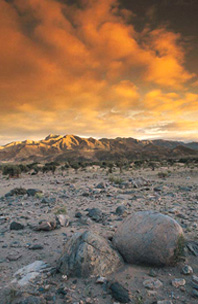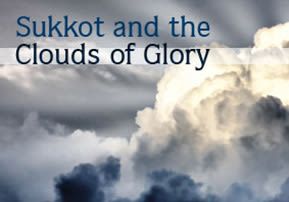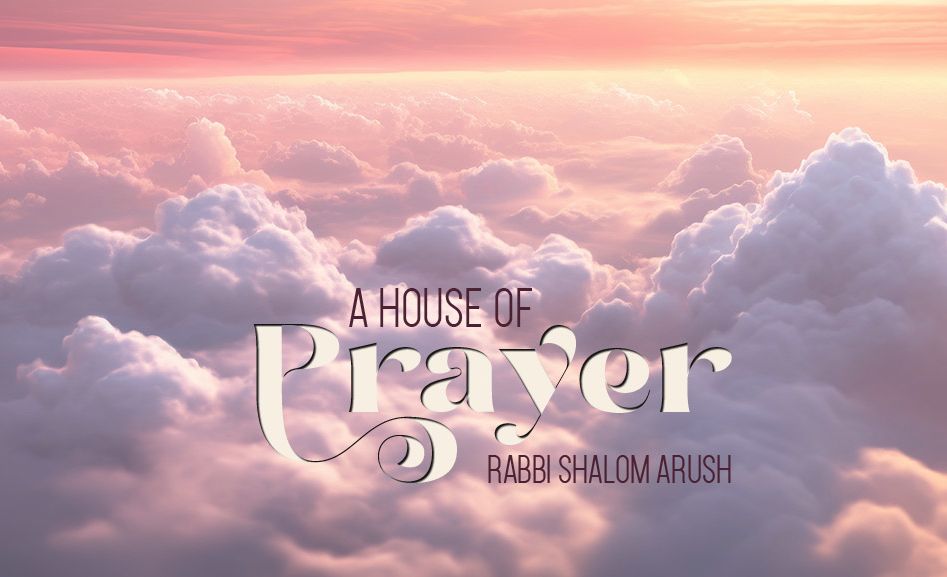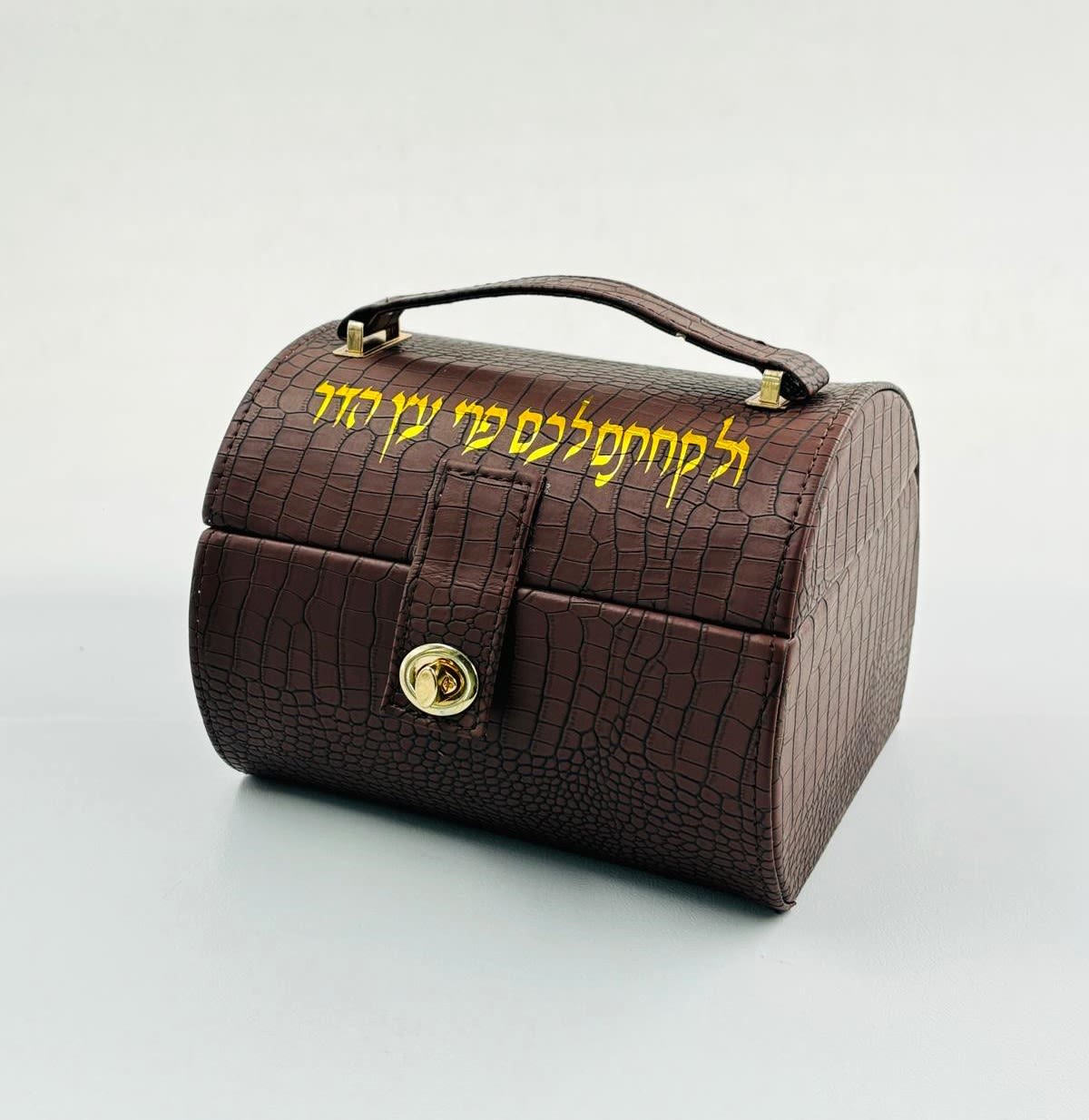 On the fifteenth day of the seventh month (Tishrei) when you gather into your silos the year’s produce, you shall celebrate the holiday of Hashem for seven days…. In Sukkot (literally, protective tents) you shall reside for seven days… in order that the generations to come shall know that I provided Sukkot for the Bnei Yisroel when I took them out of Egypt. (Vayikra 23:39-43)
On the fifteenth day of the seventh month (Tishrei) when you gather into your silos the year’s produce, you shall celebrate the holiday of Hashem for seven days…. In Sukkot (literally, protective tents) you shall reside for seven days… in order that the generations to come shall know that I provided Sukkot for the Bnei Yisroel when I took them out of Egypt. (Vayikra 23:39-43)
“I provided Sukkot for the Bnei Yisroel” — Rebbi Eliezer explained, the Sukkot of the verse were the Clouds of Hashem’s Glory. (Seven divine clouds surrounded the Bnei Yisroel throughout their travels in the desert. The clouds leveled the rugged desert floor and shielded the Bnei Yisroel from the scorching sun, besides protecting them from predators and enemy ambushes — see Rashi Bamidbar 10:34, Devarim 25:18, Gemara Berachot 54b, Targum Yonatan Bamidbar 33:5. -ed.)
Rabbi Akiva translated the verse literally. The Bnei Yisroel made themselves tents in the desert, and it is to these tents that the verse refers. (Gemara Sukkah 11b)
In what way were the Sukkot that the Bnei Yisroel built in the desert related to the fifteenth day of Tishrei? The Bnei Yisroel entered the desert, and enjoyed the protection of their tents and the Clouds of Glory, during the hot month of Nisan — six months before Tishrei. Why do we wait half a year and celebrate the protection of these Sukkot in Tishrei?
Accepting Rebbi Akiva’s interpretation of the verse (that the Sukkot were actual tents), there are a number of ways to link the Jews’ Sukkot to the Tishrei season.
(1) The Ibn Ezra and Ramban (Vayikra 23:43) explain that the tents of the Exodus from Egypt were not meant to protect the Bnei Yisroel from the blazing sun (contrary to Rashi’s assumption in Gemara Sukkah 11b) since the Clouds of Glory already provided full protection from the sun. Instead, the tents were built to protect them from the chill of winter. Since the cold season begins towards the end of Tishrei, it is then that we commemorate the Jews’ tents. (The weak point of this hypothesis is the fact that the Sukkot *we* build are designed specifically for casting shade and not for granting warmth — see Sukkah 2a, 8b, 12a.)
(2) The Rashbam (Vayikra ibid.) suggests that although our fathers’ Sukkot were not built in Tishrei, it is necessary for *us* to remember their Sukkot specifically in Tishrei. Tishrei is the month during which we gather into our houses the produce of our land. When we assay the year’s produce we may become arrogant, gloating in the accomplishments of our toil. We must therefore remind ourselves that the land we live on, and its produce, were granted to us by Hashem in His kindness.
The Sukkot built in the desert symbolize our homeless wandering to Eretz Yisroel. By moving into Sukkot in Tishrei, we remind ourselves that we originally owned no land at all. Hashem miraculously delivered Eretz Yisroel and its inhabitants into our hands, and it is He Whom we must thank for all that we have.
These suggestions, however, are only valid according to the opinion of Rebbi Akiva. According to Rebbi Eliezer, the Sukkot of the desert were the Clouds of Glory. The Clouds surrounded the Bnei Yisroel immediately upon the Exodus, in Nisan (see Targum Yonatan Bamidbar 33:5). Also, these clouds represent our miraculous salvation from the hands of the Egyptians, not our homeless wandering. According to Rebbi Eliezer’s interpretation (which is accepted halachically, see Shulchan Aruch O.C. 625:1, Bi’ur HaGra ad loc.) the question may be raised once again — why aren’t we commanded to build our Sukkot during Nisan?
The early commentators suggest a number of approaches to this question, however none of them intrinsically relate the commemoration of the Clouds of Glory to the Tishrei season. Instead, they associate Sukkot with Tishrei merely for practical considerations: Sukkot is celebrated in Tishrei in order to remember the miracles of the Egyptian exodus during the other half of the year, or in order to make it obvious that our Sukkot are built in commemoration of our past rather than for personal comfort, or in order to commemorate something else besides the Clouds of Glory. (See Ramban Vayikra 23:43, Tur O.C. 625, Chizkuni Vayikra Ibid.)
A late medieval commentator, HaRav Moshe Alschich (c. 1500), suggests a novel approach to this question in his commentary to the Torah (Vayikra 23:33). First, the Alschich poses another question: Why do we commemorate the Clouds of Glory any more than the other miraculous escorts that attended the Jewish People in their journey through the desert? Why don’t we commemorate the spring that poured forth from a rock, or the Manna — the heavenly food that rained upon us in the desert? (See also Birkei Yosef Orach Chayim 625.) We can only conclude, says the Alschich, that the Clouds of Glory represent more than just another miracle that occurred to our fathers in the desert.
A Divine Cloud often represents Hashem’s presence (see Bereishit 22:4, Shemot 13:2, 19:16, Vayikra 16:2, and Rashi ad loc.). The Clouds of Glory represent the fact that Hashem caused His presence to rest upon us in the desert. Although Hashem caused His presence to rest upon us when we left Egypt, the Alschich continues, when we sinned and worshiped the Golden Calf He removed His presence from amongst us (as we find in Targum Shemot 33:3. Perhaps the Clouds of Glory also departed at that point — see Shemot 32:25, “Ki Pharua Hu…,” Vilna Gaon Shir Hashirim 3:1). The sin of the Golden Calf was forgiven on Yom Kippur (see Rashi Shemot 34:29), and it was then that Hashem returned His presence to the Jewish encampment. On Sukkot we celebrate the permanent return of Hashem’s presence and His Clouds of Glory to our encampment. It is indeed appropriate to commemorate the Clouds of Glory immediately after Yom Kippur!
The Vilna Gaon (quoted in Kol Eliyahu #84) further develops this theme. The Gaon demonstrates that Sukkot should not merely be celebrated “shortly after Yom Kippur,” but rather exactly *five* days after Yom Kippur, just as is prescribed by the Torah.
The Clouds of Glory, suggests the Gaon, may not have returned immediately upon Moshe’s return with His message of atonement on Yom Kippur. After all, full atonement came only with the building of the Mishkan (“Hashem said, ‘Let the gold of the Mishkan atone for the gold used in the Golden Calf!’ ” — Tanchuma Terumah, 8). The Divine Presence returned to the Bnei Yisroel only after the commencement of the building of the Mishkan.
When did the Bnei Yisroel start to build the Mishkan? Since Moshe was commanded to build the Mishkan on Yom Kippur (Tanchuma, ibid.), we can assume that he passed this Mitzvah on to the Bnei Yisroel the following day, on 11 Tishrei — as Rashi in fact contends (Shemot 35:1). At that point, the Bnei Yisroel started to donate materials towards the construction of the Mishkan. Their donations continued to arrive for two consecutive mornings (the 12th and 13th of Tishrei), as the Torah states, “They brought Moshe contributions *morning* after *morning*” (according to Rav Yochanan, Shemot Rabba 41:2). If we allow Moshe another day to distribute the materials among the various craftsmen (to prevent theft, all the materials had to be meticulously weighed upon being given to the craftsmen), the actual construction of the Mishkan began not on the day following the arrival of the donations but rather *two* days later. It is on that day — the 15th of Tishrei — that the Clouds of Glory returned, and so it is on that day that we commemorate them by sitting in Sukkot!
My brother, Harav Elimelech Kornfeld, pointed out that according the Gemara in Shabbat 97b it is even more obvious why the building of the Mishkan could not commence on the day following the arrival of the last donations. The Torah tells us that after the second day of donating, Moshe announced throughout the camp that no more donations should be brought (Shemot 36:6). It would seem that enough donations had already been provided. However, the Gemara in Shabbat tells us that this was not the basis for the announcement. The announcement was made because Shabbat was about to begin, and it is not permitted to carry donations to the Levite encampment — where Moshe and the builders of the Mishkan were to be found — on Shabbat.
If so, it is obvious why the building of the Mishkan could not have started on the following day (14 Tishrei). As Rashi (Shemot 35:2) tells us, it was not permitted to build the Mishkan on Shabbat. The commencement of the Mishkan’s construction had to wait for the 15th! (The Gaon’s “day of distribution” hypothesis is necessary only according to Rabbenu Chananel [see Tosafot ad loc.], who rejects Rashi’s reading of the above Talmudic passage and contends that Moshe indeed ordered the halt of donations on the 14th only because enough material had already been collected.)
According to the Gaon’s approach, on Sukkot we not only celebrate Hashem’s dwelling amongst us, we also celebrate the building of the Mishkan, through which Hashem’s presence came to rest amongst us. Support for this thesis can be drawn from a number of sources.
(1) First of all, the Beit Hamikdash — the Mishkan’s successor — is often referred to as a “Sukkah” in Scriptures (see Tehillim 76:3, Eichah 2:6 — see also Amos 9:11). “Sukkah” is indeed an appropriate name for a tent that represents that holy place.
(2) Secondly, when King Solomon completed the construction of the Beit Hamikdash, the Bnei Yisroel celebrated its dedication during the seven day period immediately preceding Sukkot (Melachim I:8:65). The Gemara (Mo’ed Katan 9a) tells us that they would have preferred to celebrate it during the Sukkot festival itself, but for certain halachic considerations. According to the Gaon’s reasoning, Sukkot is certainly a proper time to celebrate the building of the Beit Hamikdash.
(3) Also, the Gemara in Sukkah (5a-b) concludes that the holiday Sukkah must be at least ten Tefachim high because “the Divine Presence does not lower itself below ten Tefachim.” Similarly, it relates these ten Tefachim to the ten Tefachim of empty space between the wingtips of the Golden Keruvim [~Cherubim] and the cover of the Holy Ark — the exact place in the Mishkan where the Divine Presence “dwelled” (Shmot 25:22). The Sukkot we build are apparently a dwelling place for the Divine Presence as well, symbolizing that each and every one of us is fit to be a delling place for His Presence (see Shemot 25:8; Rashi Vayikra 20:3; Yirmiyah 7:4)!
(4) Finally, the Gemara in Sukkah (43b) proves that we are obligated to eat in the Sukkah at night (and not only by day) by making a comparison between the Mitzvah of Sukkah and Aharon’s induction period (Vayikra 8:35). Perhaps our seven day stay in the Sukkah is symbolically inaugurating us to serve the Divine Presence that dwells amongst us.
May we merit to witness the building of the final Beit Hamikdash and the return of the Divine Presence to Yisroel!
***


 On the fifteenth day of the seventh month (Tishrei) when you gather into your silos the year’s produce, you shall celebrate the holiday of Hashem for seven days…. In Sukkot (literally, protective tents) you shall reside for seven days… in order that the generations to come shall know that I provided Sukkot for the Bnei Yisroel when I took them out of Egypt. (Vayikra 23:39-43)
On the fifteenth day of the seventh month (Tishrei) when you gather into your silos the year’s produce, you shall celebrate the holiday of Hashem for seven days…. In Sukkot (literally, protective tents) you shall reside for seven days… in order that the generations to come shall know that I provided Sukkot for the Bnei Yisroel when I took them out of Egypt. (Vayikra 23:39-43)










